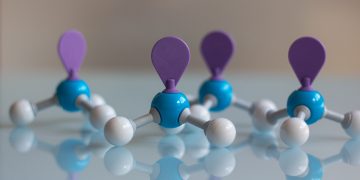Equinor inked an agreement with Eidesvik Offshore concerning the modification of the Viking Energy supply vessel which will be fuelled by carbon-free ammonia and will transport supplies to installations on the Norwegian continental shelf (NCS).
Specifically, Equinot awarded the company with a five-year contract, which will come into effect from April 2020, when the current contract expires.
The Viking Energy supply vessel will in the contract period be part of a research project developing, installing and testing long-distance sailing fuelled by carbon-free ammonia fuel cells. The technology will be tested on the vessel from 2024.
Based on the partners’ plans, ammonia will meet 60-70% of the power requirement on board for a test period of one year. Viking Energy will still be able to use LNG as fuel, and the remaining power requirement will be met by battery.
In the meantime, the project will test if the technology can reach to a 100% carbon-free power over long distances.
Referring to the project, Cecilie Rønning, senior vice president for Equinor’s joint operations support stated that
Equinor aims to reduce the emissions in our supply chain, and regards the use of ammonia as a promising solution. Viking Energy may become the first supply vessel in the world covering long distances fuelled by pure carbon-free ammonia.
It is reported that the main partners of the five-year research project are NCE Maritime Cleantech, Eidesvik Offshore, Wärtsilä, Prototech and Equinor. Wärtsilä, who will deliver the power technology and ammonia storage and distribution systems, while Prototech will deliver the fuel cell system.
The ammonia project on Viking Energy costs NOK 230 million, a part of which receives EU funds. In the meantime, the partners are also in touch with Innovasjon Norge and Enova about potential additional funding of the project.
Henriette Undrum, Equinor’s head of future value chains added that
If we solve this the ship industry will for the first time use a fuel that does not generate emissions during combustion. Much work remains, but Equinor will contribute both to technology development and as a customer. We have never before used a carbon-free fuel on a large vessel without range anxiety.
This green project is in line wit Equinor’s plans on a zero-emission aim by 2050, informing that it plans to cut the emissions at 40% by 2030, 70% by 2040, and to near zero until 2050.






























































